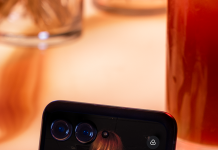
I first laid my hands on the Google/Samsung Nexus S from Vodafone on Friday (25th) and from over a weeks use, I can straight out say I’ve been somewhat impressed, more with the software than the hardware, but it has been a positive experience overall. I covered some of the main problems I have with the Nexus S initially in my first impressions post, so be sure to check that out as well as this review, which you can get into after the break.
Pros..
- Stock Android 2.3.3!
- Extremely fluid and fast
- Reasonable camera
- Super LCD display is very nice, not washed out
Cons..
- Previous generation hardware
- No 720p video capture
- Plastic/cheapish feel
- Fingerprint magnet, despite Oleophobic front glass
- NFC is pretty useless in Australia
- No MicroSD expansion slot

Hardware..
The Nexus S doesn’t present anything we haven’t seen in the past. In a lot of ways it really is basic, but I think that’s what Google wanted in order to make Android 2.3 (Gingerbread) really stand out. The 4″ Super LCD display, packing 800×480 pixels or WVGA, adorns the front of the Nexus S underneath the curved glass that gives the device its unique shape. A shape that really does make sense given that most people’s faces also curve, and I do like it. The curve is quite subtle but makes a difference when you have it up to your face whilst talking on the phone, it follows the curve of your face and sits wonderfully. This curve does lead to the bottom of the device being quite thick compared to the rest of the device though it still feels well-balanced.
Above the display is the speaker for calls, and above that the VGA front-facing camera which is a feature that I didn’t really use as I had no need to. This was mainly due to the lack of any Android support (mainly Gtalk) for video chatting amongst other Android users, though you can use a third party application to have video calls cross-platform which is always nice. Along with the camera are the usual sensors such as proximity for turning off the screen when you’re on a call and ambient light sensor to automatically change the display brightness. Missing from the top of the Nexus S is a notification LED which really pissed me off to put it bluntly. Android has a wonderful notifications system which alerts you to missed calls, text and other events while the screen is off. Without the notification LED I found I was regularly missing texts from friends and family when they were received as I couldn’t hear the phone go off. Please fire whoever it is at Samsung who made that design decision.
Below the display are the 4 capacitive buttons (another pet hate of mine) which from left-to-right are: back, menu, search & home. Once again this is totally inconsistent with most other android devices and I found to be possibly the stupidest layout of the buttons I have come across. If we can learn anything from the image below, it’s that there is no designated layout of the buttons, however they all seem to agree that at least the menu button needs to be second from the left. The rest can be handed over to a toddler who will stick them wherever they want.

The rear of the device is where the 5MP camera sits alongside the LED flash and loud-speaker. The camera is technically capable of 720p but only shoots 480p video which is a bit of a let down but not a deal breaker. The loud-speaker isn’t the best I’ve heard nor is it the loudest by a long shot, therefore we don’t recommend using it to play music outdoors or where there is conflicting noise. On the bottom of the Nexus S is the micro USB connector, 3.5mm headphone jack and microphone. The volume rocker is on the left side of the device and power on the right hand side. You’ll note the lack of a MicroSD slot, so don’t expect to pack this thing with anymore than 16GB of music, videos & photos.
Google is pushing for the use of NFC (Near Field Communication) in mobile devices and the Nexus S was the first device made with an inbuilt NFC read/write chip. It can be used to read tags and hopefully not too far in the future it will be used as a credit card replacement. But for now, at least in Australia, it’s completely and utterly useless.
Display..
Super LCD is the display technology of choice for the variant of the Nexus S sold via Vodafone. This basically means the colours aren’t as deep and vivid as Super AMOLED but are better than colours shown on regular LCD. Super LCD is also more easy-going on the battery and is better for viewing in direct sunlight. Unlike most LCD displays, the Nexus S isn’t washed out and pixels aren’t as visually obvious, which is always a plus.
The screen is extremely responsive and can handle 5 fingers interacting with it at any one time (one would call this phenomenon ‘multitouch’), which is perfect for the new gestures being implemented into Google Maps and gaming titles that require multiple fingers to fully immerse you in the experience. If there’s anything Samsung is good at producing, it’s displays and they’ve aced it on the Nexus S.

Battery Life..
Straight out, it’s not great. Though it’s not great on any Android smartphone I’ve reviewed. Like any phone, after a few charge cycles the battery life increased allowing for a full day (~17hrs) of use — with Syncing and Live Wallpapers disabled. The Battery is quite large at 1500mAh which in comparison to something like the Motorola Atrix, clocking in at 1930mAh, is still not the best. More needs to be done by all manufacturers to extend battery life or create better Batteries or just implement nuclear power stations into devices. Any of those will be just fine for me.
Camera..
With 5MP of shooting power the Nexus S can knock down photos quite well. We’ve embedded some shots below for you to have a gander at. Shall we agree they’re washed out? Shall we agree I should drink less Red Bull? Note I didn’t downsize the images, so they’re still 2MB+ so you can see the raw detail if need be.
[nggallery id=71]
Software..
As I said above, this device is designed to make the software stand out and it does just that. The Google Nexus S runs Android 2.3.3 in the purest of forms. There’s not a single carrier app installed by Vodafone, or slight interface change made by Samsung and that’s the way Android should be.
The design is very much based around the idea of dark background, white text and green and orange accents (seen here). The dark front on the Nexus S was intended to complement the dark colours of Gingerbread with the deep blacks of Samsung’s Super AMOLED display technology, but that idea was thrown out the door with the use of Super LCD on the Nexus S instead.
Speedy is one way you could describe how the software runs on the Nexus S. To be honest, with Live Wallpapers switched off (which is never for me) this is one of the most fluid and slick devices I’ve used. I tested Wi-Fi hotspot a few times and it worked flawlessly, although it heated up the battery to the point where you could warm your coffee with it. All the other standard Android apps are very much the same and don’t need their own review.
Keyboard..
The best keyboard on Android yet. No, seriously. It kicks all kinds of arse. I found it easier to type fast on this keyboard than the keyboard on the iPod Touch. While sometimes it will register presses slightly above where your finger hits this is easily overcome once you start using the keyboard more.
Performance..
Even though this device is fluid, it’s not the most powerful thing on the market. It’s powered by the same 1GHz Hummingbird CPU that you’ll find in the Samsung Galaxy S, yet scores below the Nexus One (running 2.2+) in Quadrant. I’d take a screenshot to prove this, but ADB won’t register the device. Lame.

Telephony..
Believe it or not this is a phone as well as many other things. Once again, nothing amazing to report here. I could be heard on one end, the other person heard (quietly) on my end. I think that’s usually how a phone call works, but I could be wrong.
Although not really related to the telephony part of the device, ringtones are sometimes hard to hear through the crappy loud-speaker on the back of the device. Especially when said loudspeaker is facing downwards against another object.
Freedom..
The Nexus S is all about developer freedom really. The bootloader can be unlocked (fastboot oem unlock) and locked (fastboot oem lock) to allow for custom builds of Android to be flashed onto the device. For Android nerds this is the pinnacle of win. For anyone else, you probably don’t have a bloody clue what was just said, not a problem. This freedom allows you to jump ship from stock Android and leap ahead to custom builds like CyanogenMod or even just update to the latest version of Android before it’s pushed out by Google/Vodafone. Either way, this is how every Android should be made; we’re getting there slowly..

Conclusion..
I said it in the first thoughts post and I’ll say it again: If you own anything above a HTC Desire and don’t need a device with unlockable bootloader, the Nexus S is not really a worthy upgrade. However, if you’re running on an old school Android device or you’re thinking of jumping ship to Android, then the Google Nexus S from Vodafone should be your first port of call. This is how Google want you to use Android and this is how Android should be. Any questions, leave them in the comments, I’m here till Wednesday.
The Google Nexus S from Vodafone – The way Android should be seen and used. I like it.





